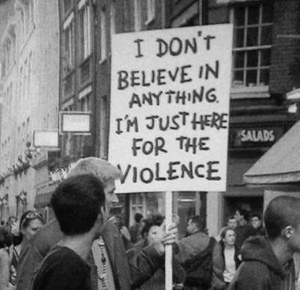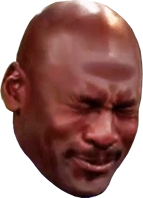🚨 First We Take Columbia (1/2):
—
On April 23, 1968 hundreds of Columbia students seized Hamilton Hall, holding Dean Coleman hostage. Over the following days, five buildings on campus were occupied. The occupiers demanded that Columbia stop a construction project that would contribute to the gentrification of Harlem, an end to a secret research project funded by the CIA, and amnesty for student protesters. The occupations were finally brought to an end on April 29, when the NYPD stormed the occupied buildings, resulting in nearly seven hundred arrests. In response, faculty went on strike and campus was closed for the remainder of the semester. New occupations on campus and in the surrounding neighborhood sprung up in the following weeks. Eventually the Columbia administration gave in to nearly all of the occupiers’ demands. What follows are some lessons from April, 1968 that might be useful today, now that university occupations have re-emerged as a tactic within the movement to halt the genocide in Gaza.I. Occupations are effective because they are disruptive. The April 1968 occupations shut down the entire university for over a week. This forced the administration to concede to their demands, even after the movement faced repression.
II. An occupation needs to spread in order to survive. New buildings need to be taken on campus, throughout the city, and across the country. Take the enemy by surprise. Strive for daily or even hourly successes, however small. At all costs, retain superior morale.
III. Every occupation is a commune. By shutting down the normal flows of capitalist society, they open up space for something new to emerge. These become a place to experiment with how we might live differently. Share everything. Inside the occupation, there is no private property. Break down barriers. Inside, social status and jobs are meaningless.
“The whole point of Columbia ’68 was that if you were inside one of the occupied buildings, you had just as much power as anyone else. It didn’t matter who you were, what your major was, who your parents were, or whether you were on scholarship or paying your own way or not even a student. None of these things mattered when it came to our daily lives inside Mathematics. Everyone was equal…”
IV. All movements are confronted by the separations of capitalist society. This is even more so the case with occupations, as they are immediately a question of living together. But wrestling with this limit can be done in a manner that contributes to the movement’s dynamic rather than devouring it. The occupations of 1968 were immediately confronted by questions of race and gender. Black and white students occupied separate buildings. But by organizing themselves, black students contributed to the strength of the entire movement. The determination and discipline of the black students occupying Hamilton Hall inspired the other student occupiers to become more determined as well. Within each occupation, efforts were made to overcome the gendered division of labor. Security and cooking was done by people of all genders. The bathrooms were desegregated.
V. A proliferation of occupied spaces requires the space for a proliferation of autonomous initiatives. Each tendency of the movement will need to find the confidence to organize themselves and to act. As new occupations opened in 1968, each one took on its own distinct characteristics and culture. The Mathematics building, for instance, was known to be the “most militant” and had the highest proportion of outsiders.
🚨 First We Take Columbia (2/2):
—
VI. Occupations draw strength from the specter of a riot. The April 1968 occupations took place in the immediate aftermath of the “Holy Week” of riots in the surrounding neighborhood and cities across the country after the assassination of Dr. Martin Luther King, Jr.. Campus administrators, city officials, and the police department worried that any attempt to suppress the occupations might lead to unrest in the surrounding neighborhood; Harlem might invade Columbia.An occupation today will be in a stronger position if it is similarly able to build and mobilize support from the surrounding neighborhood.
VII. The first task then is to open the campus to the community. Students from other campuses, residents of the surrounding neighborhood, and outside agitators need to be welcomed in. In April 1968, five hundred people marched on the gate at 116th St and Broadway. The NYPD stood down out of fear that violence might otherwise erupt. Similar tactics might be necessary today.
VIII. The future belongs to the daring. It is unclear if a majority of the campus or city supported the occupations while they were actually happening. But polls show that a strong majority at Columbia claimed to have supported them afterwards. No one wants to have been on the wrong side of history. But it takes initiative to overcome inertia. Audacity clears away the clouds of confusion. Bold actions win support, even if only in hindsight.
IX. Form committees. Once you seize a building, get organized around practical tasks. In 1968, a defense committee built barricades and coordinated the night watch. A liaison committee established communication between occupations and with the outside world.
“We had a walkie-talkie setup, citizens’ band walkie-talkies, plus there were telephone communications to every building, which the university tapped. We had three mimeographs at work constantly, and there were people who did nothing during the strike but relay to the mimeograph machine. And there was a big sign on the wall, a quote from somebody in Berkeley, who says five students and a mimeograph machine can do more harm to a university than an army.”
X. Avoid the endless meeting. Accounts of the Columbia occupations often emphasize that the participants spent nearly all of their time in around the clock meetings. This was intended to ensure equal participation and real communication. Recent experiences have shown that general assemblies often drain morale and suffocate initiative.
XI. This is only the beginning. A number of revolutionary organizations emerged from the 1968 occupations movement. Pushing the university struggle to its limit might contribute in a similar way to producing a constellation of revolutionary forces in the city today.
XII. “Two, three, many Columbias.” Then as now, it will take the opening of new fronts and the spread of increasingly disruptive tactics, such as building occupations, to pull the emergency brake on the war machine.
XIII. The occupations movement in France the following month showed that, in the right circumstances, struggles within the university can detonate a much wider social explosion.
XIV. Smoke the president’s cigars.
All power to the communes.
 Tobacco al Houthi
Tobacco al HouthiInstead of that goofball s*** above peep the real statement from the Columbia students. Posting below and apologies for the long text in advance. Important to read. I’ve historically been very pessimistic about the potential US student movement broadly but it’s clear they are being lead by highly politically advanced people
 Tobacco al Houthi
Tobacco al HouthiObviously staged man foh
Thinkin’ protests are temporary and trendy
Well rock a t-shirt and carry a poster
And two weeks later it’s back to normal murphybridget837
murphybridget837Thinkin’ protests are temporary and trendy
Well rock a t-shirt and carry a poster
And two weeks later it’s back to normalRead that accounts psycho ass bio while you jump in front of a train
 Tobacco al Houthi
Tobacco al HouthiRead that accounts psycho ass bio while you jump in front of a train
lmao bro chill. I'm just laughing at some goofy b**** that's just doing what's trendy. I'm not siding with Israel or their dogs in the US.
- https://twitter.com/MarkRuffalo/status/1782206412283613410https://twitter.com/MarkRuffalo/status/1783178356227240294
 JaeRell
JaeRell🤡

just reading about the students/faculty walking out at Columbia, good on them

 murphybridget837
murphybridget837lmao bro chill. I'm just laughing at some goofy b**** that's just doing what's trendy. I'm not siding with Israel or their dogs in the US.
You know exactly what you’re doing. And that’s a pro genocide Twitter account
It’s a beautiful thing that’s happening on college campuses, international solidarity, especially from the Ivys, and their faculty included, I once thought inconceivable
Zionism in shambles
 Lou
LouIt’s a beautiful thing that’s happening on college campuses, international solidarity, especially from the Ivys, and their faculty included, I once thought inconceivable
Zionism in shambles
The youth won’t stand for this
- https://twitter.com/sahouraxo/status/1783892350244122894
 emo genghis khan
emo genghis khanPlanning on stopping by this while I’m in town this week
Via Mintpress news
Construction of Rafah port begins
US troops have commenced the construction of the infamous Rafah port, possibly in anticipation of Israeli military actions and the forced evacuation of Palestinians from the area.
The horrors of the mass graves at Nasser and Al Shifa hospitals... don't even know what to say
 Tobacco al Houthi
Tobacco al HouthiPlanning on stopping by this while I’m in town this week
Please post any thoughts you have after you do
 MrMudManMood
MrMudManMoodVia Mintpress news
Construction of Rafah port begins
US troops have commenced the construction of the infamous Rafah port, possibly in anticipation of Israeli military actions and the forced evacuation of Palestinians from the area.
gaza armed groups already shooting at construction workers lol
Reports from a few different sources saying there is currently a massive build up of IOF forces near Rafah borders.
Maariv Newspaper: Israeli occupation Prime Minister Benjamin Netanyahu is "unnaturally afraid and worried" that the International Criminal Court (ICC) might issue an arrest warrant against him and other senior officials, the Israeli daily Maariv newspaper has reported.
According to the newspaper, Netanyahu made telephone calls to international leaders and officials in recent days, especially to US President Joe Biden, to prevent the issuance of an arrest warrant against him.
- via Quds News Network